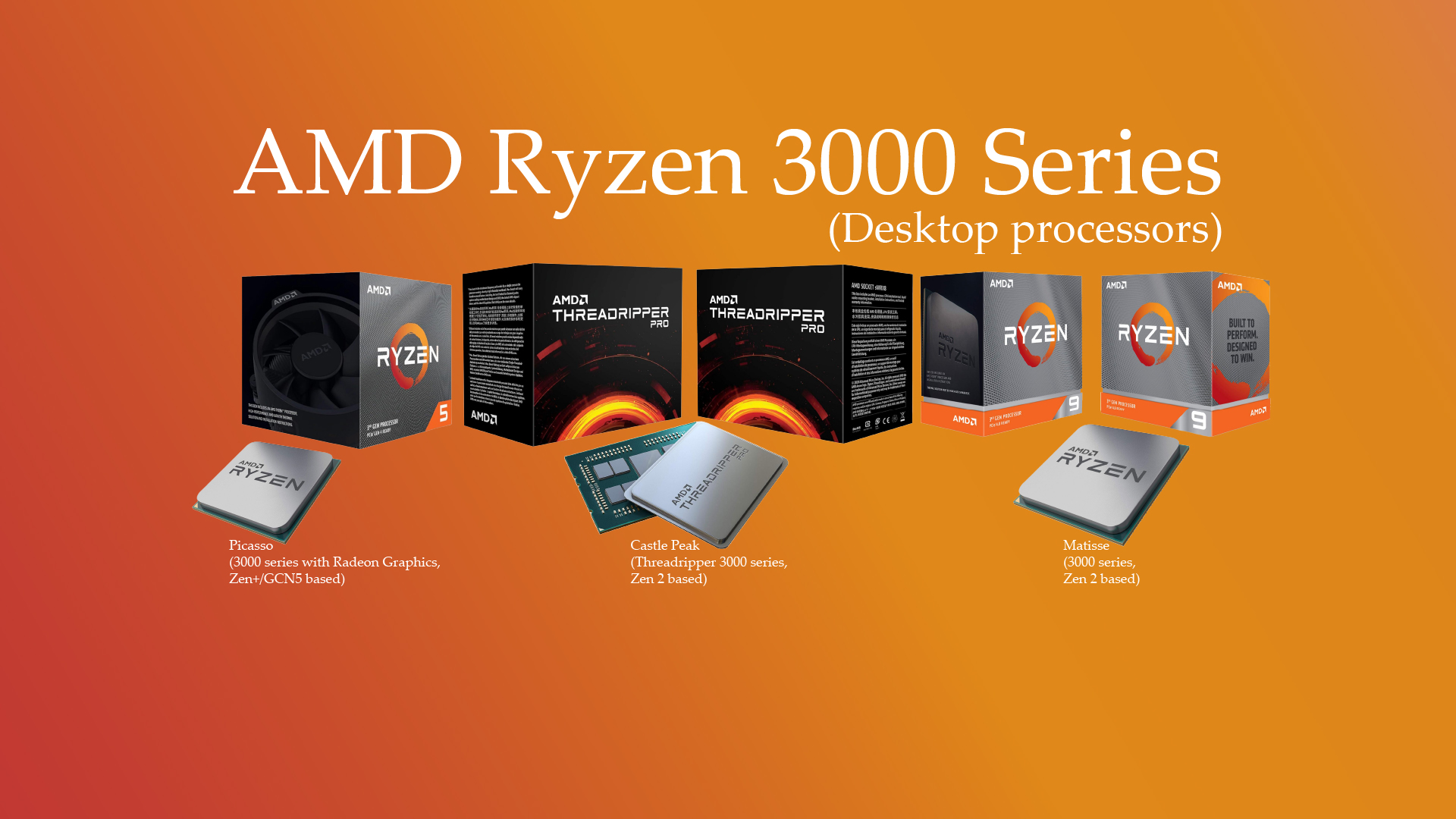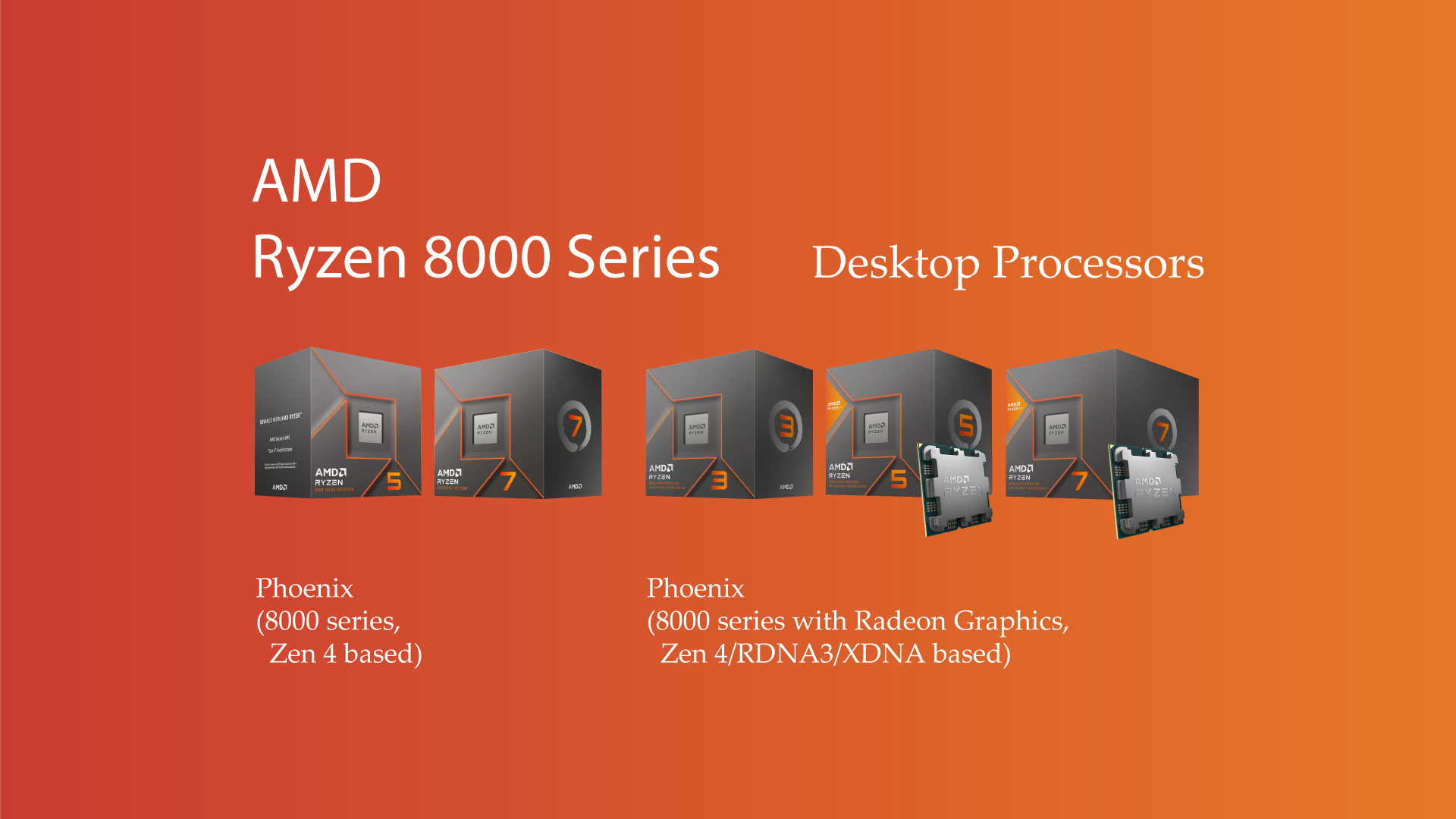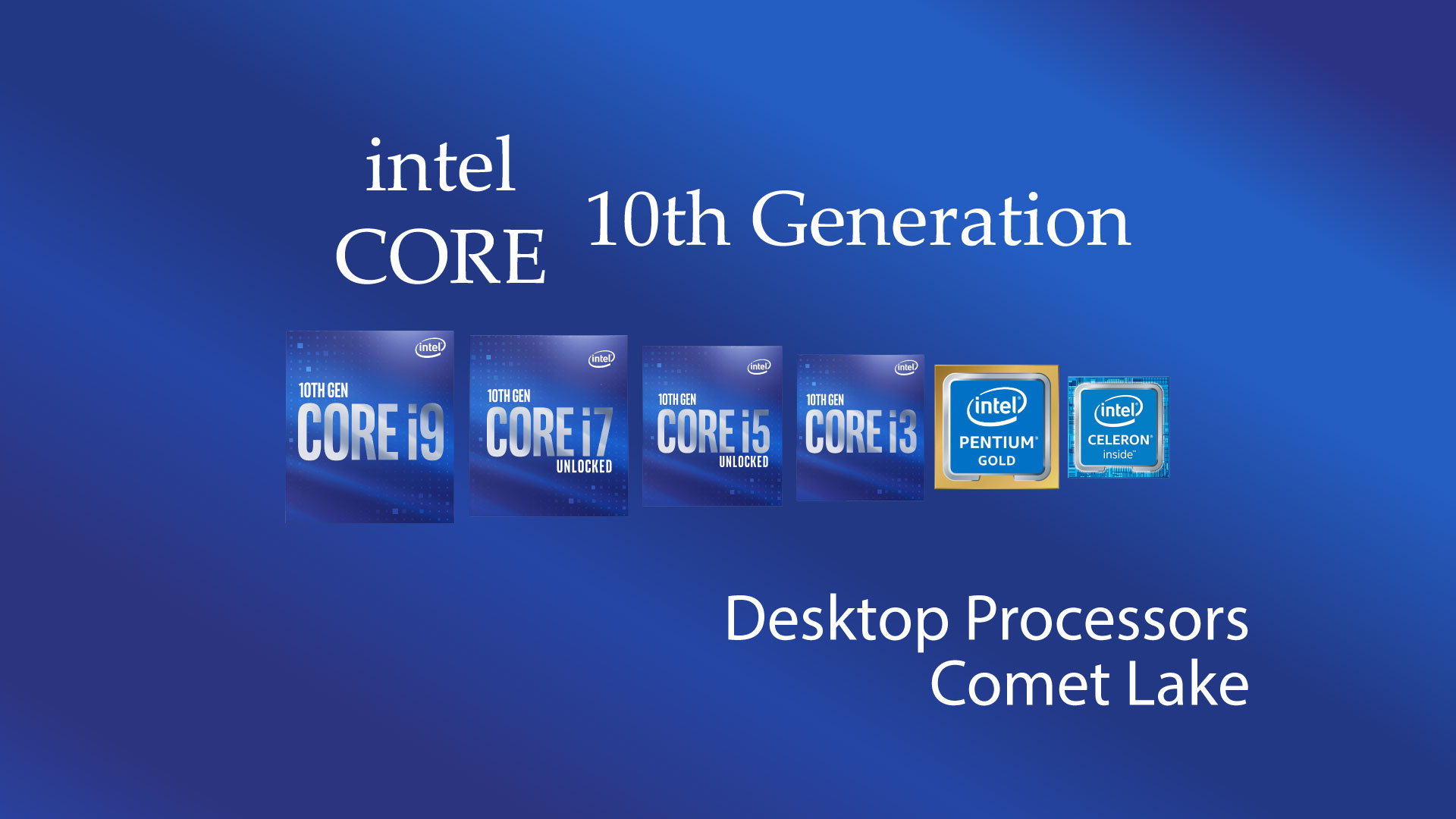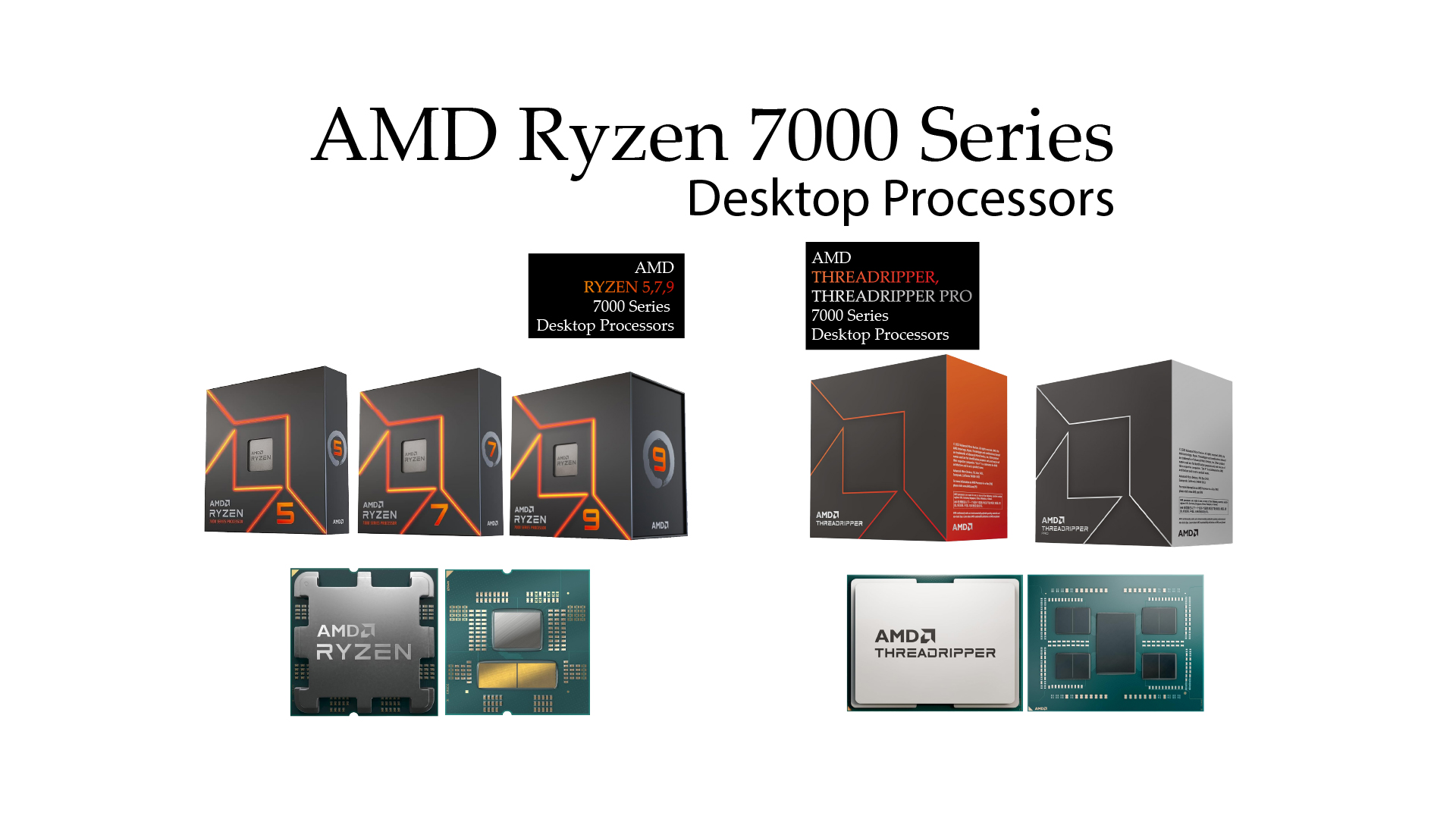Explore the advanced architecture, increased core counts, and power efficiency of AMD Ryzen 3000 processors. Ideal for gaming, multitasking, and professional workloads!
Top Features of AMD Ryzen 3000 CPUs
Table of Contents
The AMD Ryzen 3000 series processors, codenamed Picasso, Matisse, and Castle Peak, bring a host of impressive features to the desktop computing world. Whether you’re looking for energy-efficient chips with integrated graphics, high-performance gaming CPUs, or monstrous processors for professional workloads, the Ryzen 3000 series has something to offer.
The Top Features of AMD Ryzen 3000 CPUs revolve around cutting-edge architecture, superior performance, and excellent power efficiency, making them an excellent choice for various users. In this article, we’ll dive into the distinct features that make this processor lineup stand out.
Picasso (3000 Series with Radeon Graphics, Zen+/GCN5 Based)
The Picasso line is part of the Ryzen 3000 series, featuring processors that combine AMD’s Zen+ architecture with Radeon Vega Graphics. These chips are designed for mainstream users looking for solid performance without needing a discrete GPU. They’re based on a 12nm process, which improves efficiency compared to the original Zen architecture.
Key Processors:
- Ryzen 5 PRO 3400G: 4 cores / 8 threads, 3.7 GHz base clock, 4.2 GHz boost clock, Radeon Vega 11 Graphics.
- Ryzen 5 3400G: Similar to the PRO version but without the added security and management features.
- Ryzen 5 PRO 3400GE: 4 cores / 8 threads, 3.3 GHz base clock, 4.0 GHz boost clock, optimized for low-power systems.
- Ryzen 5 PRO 3350G: Another energy-efficient option in the Picasso family.
- Ryzen 3 PRO 3200G: 4 cores / 4 threads, 3.6 GHz base clock, 4.0 GHz boost clock, Radeon Vega 8 Graphics.
- Ryzen 3 3200G: Similar to the PRO version but targeting consumer systems.
- Ryzen 3 3200GE: Low-power variant designed for compact systems.
- Ryzen 3 PRO 3200GE: This model targets professional users with extra security features.
Top Features:
- Integrated Radeon Graphics: Eliminates the need for a discrete GPU, making these ideal for budget builds or compact systems.
- Zen+ Architecture: Built on a refined 12nm process, providing better efficiency and performance than the first-gen Ryzen chips.
- Multithreading: Except for the Ryzen 3 models, these chips offer multithreading, allowing for improved multitasking and gaming performance.
Matisse (3000 Series, Zen 2 Based)
The Matisse processors are the heart of the AMD Ryzen 3000 series. Based on the Zen 2 architecture and manufactured on a 7nm process, these CPUs offer significant performance improvements over previous generations. They cater to gamers, content creators, and professionals, offering high core counts and powerful single-threaded performance.
Key Processors:
- Ryzen 9 3950X: 16 cores / 32 threads, 3.5 GHz base clock, 4.7 GHz boost clock.
- Ryzen 9 3900XT: 12 cores / 24 threads, 3.8 GHz base clock, 4.7 GHz boost clock.
- Ryzen 9 3900X: Slightly lower boost clock than the 3900XT, but still offers 12 cores.
- Ryzen 9 3900: A non-X variant with a lower TDP.
- Ryzen 7 3800XT: 8 cores / 16 threads, 3.9 GHz base clock, 4.7 GHz boost clock.
- Ryzen 7 3800X: 8 cores / 16 threads, ideal for gaming and content creation.
- Ryzen 7 3700X: One of the most popular models in the 3000 series due to its excellent performance and power efficiency.
- Ryzen 5 3600XT: 6 cores / 12 threads, higher boost clock than the 3600X.
- Ryzen 5 3600X: A gaming favorite with 6 cores and excellent performance.
- Ryzen 5 3600: A great all-rounder offering good value for its price.
- Ryzen 5 3500X: A cost-effective option with 6 cores, 6 threads.
- Ryzen 5 3500: Similar to the 3500X but slightly lower clocks.
- Ryzen 3 3300X: 4 cores / 8 threads, a solid budget option with great performance for the price.
- Ryzen 3 3100: 4 cores / 8 threads, a budget-friendly entry into Zen 2 CPUs.
Top Features:
- 7nm Zen 2 Architecture: Offers up to 15% IPC (Instructions per Cycle) improvement, boosting overall performance, especially in multi-core workloads.
- High Core Count: Ryzen 9 models offer up to 16 cores, giving professionals and content creators the processing power they need.
- Power Efficiency: The 7nm process allows for lower power consumption and higher performance-per-watt.
- PCIe 4.0 Support: These are the first desktop processors to support PCIe 4.0, enabling faster data transfer rates for next-gen GPUs and SSDs.
Castle Peak (Threadripper 3000 Series, Zen 2 Based)
For extreme power users and professionals, the Castle Peak Threadripper 3000 series processors are designed to handle the heaviest workloads. These processors are based on Zen 2 architecture, like the Matisse line, but offer far more cores and threads, making them perfect for 3D rendering, scientific computing, and video production.
Key Processors:
- Ryzen Threadripper PRO 3995WX: 64 cores / 128 threads, 2.7 GHz base clock, 4.2 GHz boost clock.
- Ryzen Threadripper PRO 3975WX: 32 cores / 64 threads, designed for professional workstations.
- Ryzen Threadripper PRO 3955WX: 16 cores / 32 threads, excellent for high-performance desktop use.
- Ryzen Threadripper PRO 3945WX: 12 cores / 24 threads, entry-level for the Threadripper Pro lineup.
- Ryzen Threadripper 3990X: 64 cores / 128 threads, ideal for creators handling extreme multitasking workloads.
- Ryzen Threadripper 3970X: 32 cores / 64 threads, offering massive computational power.
- Ryzen Threadripper 3960X: 24 cores / 48 threads, providing excellent multi-threaded performance.
Top Features:
- Extreme Core Counts: With up to 64 cores and 128 threads, Threadripper processors are unrivaled in the consumer desktop space.
- Quad-Channel Memory Support: These processors support quad-channel DDR4 memory, offering massive bandwidth for memory-intensive tasks.
- PCIe 4.0 Lanes: Up to 88 PCIe 4.0 lanes ensure there’s plenty of bandwidth for multiple GPUs, storage devices, and more.
- Professional Workstation Features: The PRO models add enterprise-level features like ECC memory support and enhanced security, making them perfect for mission-critical tasks.
Table Comparison of AMD Ryzen 3000 Series
| Category | Model | Cores/Threads | Base Clock | Boost Clock | Graphics (if any) | TDP |
|---|---|---|---|---|---|---|
| Picasso (Zen+/GCN5) | Ryzen 5 PRO 3400G | 4 / 8 | 3.7 GHz | 4.2 GHz | Radeon Vega 11 | 65W |
| Picasso | Ryzen 5 3400G | 4 / 8 | 3.7 GHz | 4.2 GHz | Radeon Vega 11 | 65W |
| Picasso | Ryzen 5 PRO 3400GE | 4 / 8 | 3.3 GHz | 4.0 GHz | Radeon Vega 11 | 35W |
| Picasso | Ryzen 5 PRO 3350G | 4 / 8 | 3.6 GHz | 4.0 GHz | Radeon Vega 11 | 65W |
| Picasso | Ryzen 5 PRO 3350GE | 4 / 8 | 3.3 GHz | 3.8 GHz | Radeon Vega 11 | 35W |
| Picasso | Ryzen 3 PRO 3200G | 4 / 4 | 3.6 GHz | 4.0 GHz | Radeon Vega 8 | 65W |
| Picasso | Ryzen 3 3200G | 4 / 4 | 3.6 GHz | 4.0 GHz | Radeon Vega 8 | 65W |
| Picasso | Ryzen 3 3200GE | 4 / 4 | 3.3 GHz | 3.8 GHz | Radeon Vega 8 | 35W |
| Picasso | Ryzen 3 PRO 3200GE | 4 / 4 | 3.3 GHz | 3.8 GHz | Radeon Vega 8 | 35W |
| Matisse (Zen 2) | Ryzen 9 3950X | 16 / 32 | 3.5 GHz | 4.7 GHz | N/A | 105W |
| Matisse | Ryzen 9 3900XT | 12 / 24 | 3.8 GHz | 4.7 GHz | N/A | 105W |
| Matisse | Ryzen 9 3900X | 12 / 24 | 3.8 GHz | 4.6 GHz | N/A | 105W |
| Matisse | Ryzen 9 3900 | 12 / 24 | 3.1 GHz | 4.3 GHz | N/A | 65W |
| Matisse | Ryzen 7 3800XT | 8 / 16 | 3.9 GHz | 4.7 GHz | N/A | 105W |
| Matisse | Ryzen 7 3800X | 8 / 16 | 3.9 GHz | 4.5 GHz | N/A | 105W |
| Matisse | Ryzen 7 3700X | 8 / 16 | 3.6 GHz | 4.4 GHz | N/A | 65W |
| Matisse | Ryzen 5 3600XT | 6 / 12 | 3.8 GHz | 4.5 GHz | N/A | 95W |
| Matisse | Ryzen 5 3600X | 6 / 12 | 3.8 GHz | 4.4 GHz | N/A | 95W |
| Matisse | Ryzen 5 3600 | 6 / 12 | 3.6 GHz | 4.2 GHz | N/A | 65W |
| Matisse | Ryzen 5 3500X | 6 / 6 | 3.6 GHz | 4.1 GHz | N/A | 65W |
| Matisse | Ryzen 5 3500 | 6 / 6 | 3.6 GHz | 4.1 GHz | N/A | 65W |
| Matisse | Ryzen 3 3300X | 4 / 8 | 3.8 GHz | 4.3 GHz | N/A | 65W |
| Matisse | Ryzen 3 3100 | 4 / 8 | 3.6 GHz | 3.9 GHz | N/A | 65W |
| Castle Peak (Zen 2) | Ryzen Threadripper PRO 3995WX | 64 / 128 | 2.7 GHz | 4.2 GHz | N/A | 280W |
| Castle Peak | Ryzen Threadripper PRO 3975WX | 32 / 64 | 3.5 GHz | 4.2 GHz | N/A | 280W |
| Castle Peak | Ryzen Threadripper PRO 3955WX | 16 / 32 | 3.9 GHz | 4.3 GHz | N/A | 280W |
| Castle Peak | Ryzen Threadripper PRO 3945WX | 12 / 24 | 4.0 GHz | 4.3 GHz | N/A | 280W |
| Castle Peak | Ryzen Threadripper 3990X | 64 / 128 | 2.9 GHz | 4.3 GHz | N/A | 280W |
| Castle Peak | Ryzen Threadripper 3970X | 32 / 64 | 3.7 GHz | 4.5 GHz | N/A | 280W |
| Castle Peak | Ryzen Threadripper 3960X | 24 / 48 | 3.8 GHz | 4.5 GHz | N/A | 280W |
The Top Features of AMD Ryzen 3000 CPUs have redefined desktop computing, offering superior performance and power efficiency that continues to attract users from all sectors. AMD’s Ryzen 3000 series, powered by the Zen 2 architecture, brought a host of technological advancements that pushed the boundaries of processing power, multitasking capabilities, and overall computing efficiency. Whether you’re a gamer, content creator, or professional, the Top Features of AMD Ryzen 3000 CPUs have made these processors a popular choice for both high-end and mainstream users. Let’s dive into the standout features that define this groundbreaking series.
Zen 2 Architecture – A Major Leap Forward
One of the Top Features of AMD Ryzen 3000 CPUs is the Zen 2 architecture, which significantly improved performance over its predecessor, Zen+. The Zen 2 microarchitecture utilizes a 7nm manufacturing process, which allowed AMD to pack more transistors into the same physical space, resulting in higher performance and efficiency.
The 7nm process also reduces power consumption, allowing the Ryzen 3000 CPUs to offer improved thermal efficiency. This leap in design results in more cores and threads, higher clock speeds, and increased instructions per clock (IPC). For example, the Ryzen 9 3900X, part of the AMD Ryzen 3000 series, offers 12 cores and 24 threads, providing an incredible boost for multitasking, video editing, and gaming.
PCIe 4.0 Support – Blazing Fast Connectivity
Another key advantage and one of the Top Features of AMD Ryzen 3000 CPUs is the support for PCIe 4.0, which is a major upgrade over the previous PCIe 3.0 standard. PCIe 4.0 offers double the bandwidth, allowing for faster data transfer speeds between the CPU and peripherals such as graphics cards, SSDs, and other devices. For gamers and professionals who work with large datasets, PCIe 4.0 ensures faster storage performance and better utilization of high-end graphics cards like AMD’s Radeon RX 5700 series or Nvidia’s RTX cards.
This future-proofing with PCIe 4.0 ensures that users investing in the Top Features of AMD Ryzen 3000 CPUs can enjoy higher performance and faster transfer speeds without worrying about bottlenecks, even as newer and faster devices come to market.
Increased Core and Thread Counts
One of the Top Features of AMD Ryzen 3000 CPUs that made them stand out is the increase in core and thread counts across the series. Unlike the competition, AMD brought multi-core processing to mainstream users. From the Ryzen 5 3600 with 6 cores and 12 threads to the Ryzen 9 3950X with 16 cores and 32 threads, this range provides options for different needs.
More cores and threads make these CPUs ideal for multitasking and parallel processing, allowing users to run multiple demanding applications simultaneously without sacrificing performance. Whether you’re streaming, gaming, editing videos, or doing heavy 3D rendering, the Top Features of AMD Ryzen 3000 CPUs ensure smooth performance across all applications.
Improved Instructions Per Clock (IPC)
One of the unsung heroes of the Top Features of AMD Ryzen 3000 CPUs is the substantial improvement in Instructions Per Clock (IPC). The Zen 2 architecture provided an estimated 15% improvement in IPC over Zen+. This means that for every clock cycle, the Ryzen 3000 CPUs could execute more instructions, leading to better overall performance, even at the same clock speeds.
This improvement directly benefits both single-threaded and multi-threaded applications, ensuring smoother gaming performance and faster execution of compute-intensive tasks. The Top Features of AMD Ryzen 3000 CPUs make them highly competitive in scenarios that require both high-frequency single-thread performance and parallel processing efficiency.
Efficient Power Consumption and Thermal Design
Another standout feature among the Top Features of AMD Ryzen 3000 CPUs is the efficient power consumption. By moving to a 7nm process, AMD not only managed to improve performance but also reduced the amount of power required to run these processors. The thermal design power (TDP) of the Ryzen 3000 series remains impressively low, even for the higher-end models with more cores and threads.
This efficient power consumption helps with cooling, which is vital for maintaining consistent performance during long gaming or professional workloads. Users can enjoy high-performance computing without needing extremely expensive cooling solutions, making the Top Features of AMD Ryzen 3000 CPUs a well-rounded solution for both performance and efficiency.
Smart Prefetch and Larger Cache Sizes
One of the more subtle yet impactful Top Features of AMD Ryzen 3000 CPUs is the enhancement in prefetching and cache sizes. AMD has significantly increased the cache sizes with the Ryzen 3000 series, offering up to 70MB of total cache in the Ryzen 9 3950X. This larger cache size helps in reducing latency, especially in data-heavy applications such as gaming, video rendering, and scientific computations.
The prefetch improvements allow the processor to anticipate data needs more effectively, minimizing the number of times it has to wait for information from system memory. This makes everyday computing tasks feel more responsive and improves performance in professional workloads, one of the Top Features of AMD Ryzen 3000 CPUs that directly enhances the user experience.
Precision Boost 2 and Precision Boost Overdrive
A significant addition to the Top Features of AMD Ryzen 3000 CPUs is the implementation of Precision Boost 2 and Precision Boost Overdrive. These technologies allow the Ryzen 3000 processors to dynamically adjust clock speeds based on thermal and power limits, ensuring optimal performance without the need for manual overclocking.
Precision Boost 2 automatically increases clock speeds when there is thermal and power headroom, making real-time adjustments to ensure smooth performance. Precision Boost Overdrive (PBO) takes this further by allowing enthusiasts to push the CPU beyond its factory limits, provided their cooling and power supply are up to the task. These smart features ensure that users get the best performance possible, which is why they are highlighted as one of the Top Features of AMD Ryzen 3000 CPUs.
Compatibility with AM4 Motherboards
One of the most user-friendly Top Features of AMD Ryzen 3000 CPUs is their backward compatibility with previous-generation AM4 motherboards. This feature allowed users who had already invested in AM4 boards to upgrade to the newer Ryzen 3000 series CPUs without needing to purchase new motherboards. This compatibility also extended to newer AM4 boards that supported the cutting-edge PCIe 4.0 technology, making it easier for users to future-proof their systems without breaking the bank.
AMD’s commitment to long-term platform support is a major selling point for the Ryzen series, providing flexibility and value for consumers.
Enhanced Security Features
Security is an ever-important consideration in modern computing, and AMD included enhanced security mechanisms as part of the Top Features of AMD Ryzen 3000 CPUs. The integration of AMD’s Secure Memory Encryption (SME) and Secure Encrypted Virtualization (SEV) allows for the encryption of system memory and virtual machines, ensuring data security even in multi-tenant environments.
For enterprises and professionals concerned with protecting sensitive information, these security features ensure that the Top Features of AMD Ryzen 3000 CPUs meet the highest standards for data protection, adding a layer of confidence when using these processors in professional or enterprise-grade setups.
Competitive Pricing and Performance
Perhaps one of the most appealing Top Features of AMD Ryzen 3000 CPUs is the exceptional value for performance they offer. Compared to the competition, Ryzen 3000 processors are priced competitively while delivering higher core counts and more threads. This combination of high performance and affordable pricing makes the Ryzen 3000 series everything you need to know a clear choice for budget-conscious enthusiasts and professionals.
Whether you’re looking at the budget-friendly Ryzen 5 3600 or the flagship Ryzen 9 3950X, the Ryzen 3000 lineup offers a great balance of cost and performance, helping AMD to capture a significant share of the desktop CPU market.
Game-Changing Impact on Gaming and Content Creation
The Top Features of AMD Ryzen 3000 CPUs have had a profound impact on gaming and content creation. With the increase in cores and threads, as well as the improvements in clock speeds and IPC, these CPUs are able to handle the most demanding AAA games with ease. For content creators, Ryzen 3000 CPUs provide the processing power needed for 4K video editing, 3D rendering, and complex simulations, all while maintaining energy efficiency.
The Top Features of AMD Ryzen 3000 CPUs ensure that both gamers and professionals can enjoy the highest levels of performance without having to invest in prohibitively expensive hardware. This balance of power and affordability has solidified AMD’s place in the competitive CPU market, making the Ryzen 3000 series a top choice for high-performance desktop computing.
Conclusion
In summary, the Top Features of AMD Ryzen 3000 CPUs make them a game-changer in the desktop processor market. With the powerful Zen 2 architecture, support for PCIe 4.0, increased core and thread counts, and improved power efficiency, these CPUs deliver unparalleled performance for gamers, professionals, and everyday users alike. Whether you’re looking to upgrade your PC or build a new system, the Ryzen 3000 series offers a future-proof and cost-effective solution that meets the needs of today’s demanding applications.





